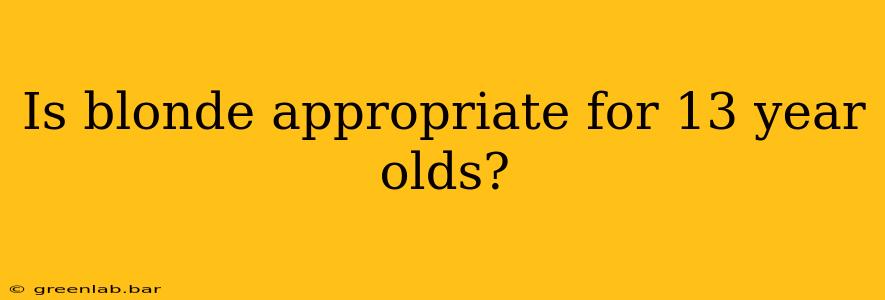Is Blonde Hair Appropriate for 13-Year-Olds? Navigating Hair Color Choices During Adolescence
The question of whether blonde hair is appropriate for a 13-year-old isn't about the hair color itself, but rather the context surrounding the decision. It's a complex issue touching upon self-expression, parental guidance, and the social dynamics of adolescence. Let's explore the key considerations.
The Importance of Self-Expression
Adolescence is a crucial period of self-discovery. Experimenting with appearance, including hair color, is a common way for teenagers to explore their identity and express themselves. For a 13-year-old, choosing blonde hair might be a way to assert independence, align with a particular style, or simply try something new. Denying this form of self-expression can be detrimental to their developing sense of self.
Parental Guidance and Communication
While self-expression is vital, parental guidance remains crucial. Open communication is key. Parents should discuss the implications of coloring their child's hair, including:
- Hair health: Bleaching, especially on previously untreated hair, can cause damage. The potential for dryness, breakage, and scalp irritation needs to be understood. Consider using less damaging coloring techniques or temporary options.
- Maintenance: Maintaining blonde hair often requires more upkeep than natural hair color. This includes regular touch-ups, specialized shampoos and conditioners, and potentially higher salon costs. The 13-year-old should understand and be prepared to manage this responsibility.
- Social implications: While hair color is a form of self-expression, it's important to consider the social context. Some schools or communities might have policies regarding hair color. Openly discussing potential social reactions can help prepare the teenager for any consequences.
- Reversibility: While some hair dyes are semi-permanent or temporary, many require professional removal if the teenager decides they want a different look.
Considering Alternatives
If parents have reservations about permanent hair coloring, several alternatives exist:
- Temporary hair color sprays or chalks: These allow for experimentation without the commitment of permanent dye.
- Highlights or lowlights: These offer a subtle change in hair color, minimizing damage compared to full bleaching.
- Hair extensions: These provide a temporary way to change hair color and style without altering the natural hair.
The Bottom Line: It's About Open Dialogue
Ultimately, the appropriateness of blonde hair for a 13-year-old isn't a simple yes or no answer. It depends on a healthy conversation between the child and their parents, weighing the benefits of self-expression against the potential consequences. Open communication, careful consideration of hair health, and exploration of alternative options are vital in guiding this decision. With a collaborative approach, a teenager can express their individuality while making a responsible and informed choice.

